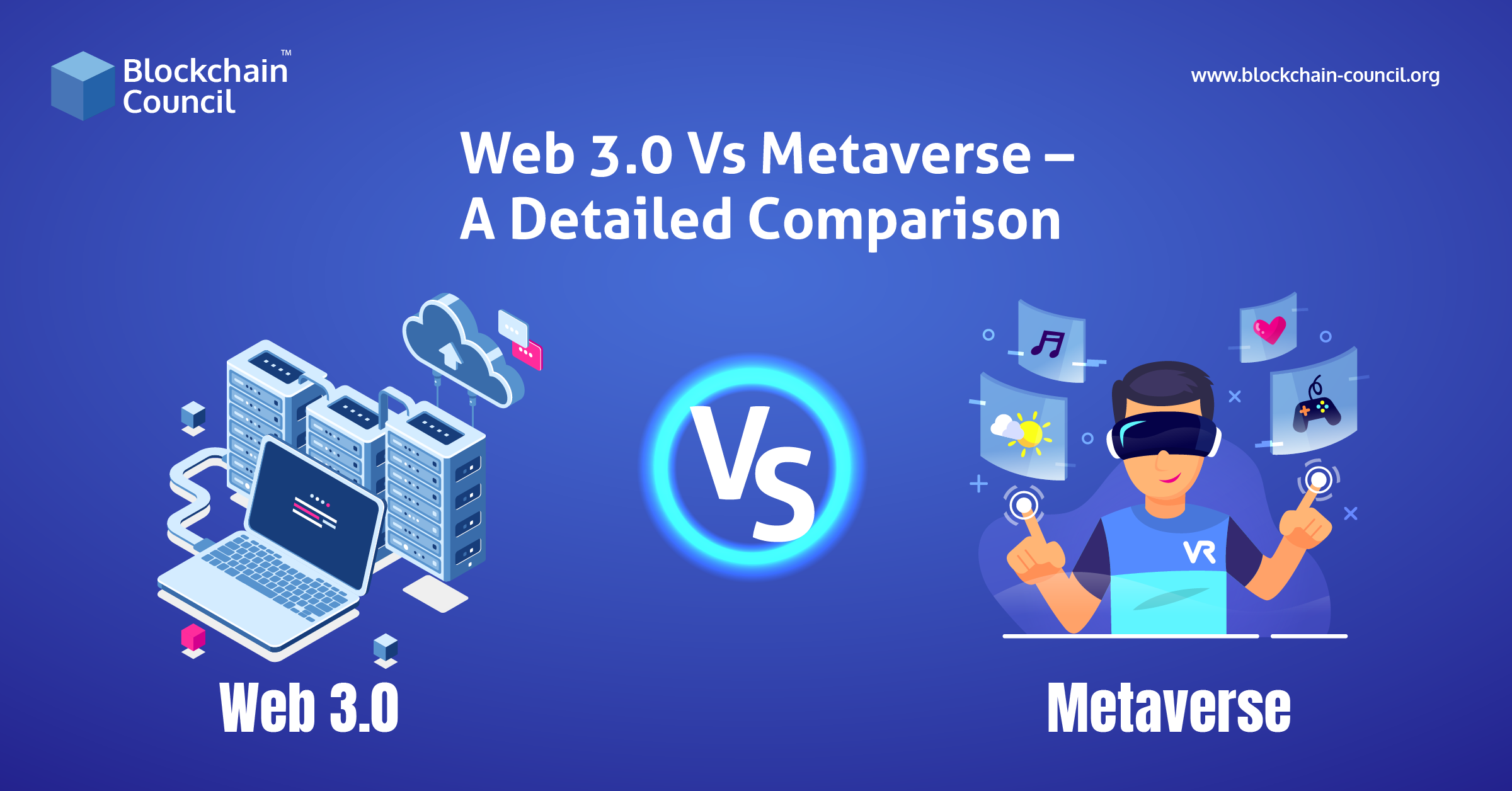
- Ayushi Abrol
- January 23, 2025
Metaverse is Web3 for some tech-savvy people, and vice versa for others!
They cannot remove the dicey concept of the gray area due to a lack of knowledge, and the Blockchain concept (overlapping part between meta and Web 3.0) is in the nascent stage. It’s not new during the revolution of computers or the internet. Even indirect users used to think fax is similar to email. People are still struggling to differentiate between computer applications and computer science.
So again, welcome the new reformation of the tech world. But the expectation of a crystal clear concept of the majority about the newly built system is like catching the lightning in the bottle!
If netizens or users are aware of the future of the internet, they are familiar with the duo name Metaverse and Web3. These two most buzzing words stormed social media like Facebook, Youtube, Twitter, Instagram.
In addition, when the internet and tech world try to familiarize itself with Metaverse, discussions on Web3 are also crucial. Moreover, both concepts would have a significant and long-term impact on connectivity’s future. Consequently, it is vital to reflect on the differences and applications for the end of the tech universe. It turns out that even though Meta and Web3 are related in some ways, they each describe different methods.
While these two topics seem similar at first glance, let’s simplify how they differ without any hiccups!
Understanding Web 3.0
As we know, necessity is the mother of invention. So, the concept of Web3 or Web 3.0 appears to solve some questions:
- How do you feel if your computer can crack the meaning of data?
- What if it can recognize people, businesses, products, data?
- Wouldn’t it be if they learn ‘what we are interested in?
What is Web3?
The Web 3.0 revolution will utilize decentralized protocols such as Blockchain, the technology used to facilitate cryptocurrency transactions. By addressing the key issues of data ownership and control, it hopes to address some of the major setbacks and shortcomings of the current internet age.
Let’s take a look at things from a different perspective.
Today, a huge portion of the world’s population relies heavily on internet-related services provided by big technology companies. Unlike Google, Apple, and Amazon, these companies dictate what services their users can use and act as middlemen between their users and their wants.
However, Web3 operates on a decentralized network and doesn’t require permission. In other words, internet providers do not have the authority to impose their will on those who use their services. They also do not serve as intermediaries between users and their needs.
Ready to dive into the Metaverse? Our step-by-step beginner’s Metaverse guide has everything you need to know for 2025.
Core Components of Web3
-
Blockchain Network
Blockchain technology is one of Web3’s key features. Decentralization is at the heart of Web3, which is built upon Blockchain technology. With Blockchain technology, data is decentralized, open, and can be distributed. So users own their data and are free to trade them without worrying about losing ownership, losing privacy, or depending on intermediaries. In addition, it allows you to log in securely over the Internet without being tracked by anyone.
Also, the use of Blockchain-based tokens and cryptocurrencies in Web3 are important aspects of the potential internet era. Among other things, users can earn rewards for their contributions to the platform’s growth by transparently monetizing and contributing to online upgrades.
-
Artificial Intelligence
As a result of the advancement of artificial intelligence, useful predictions can now be made, and sometimes even life-saving actions can be taken. Although Web 2.0 has had its share of AI, it is still largely human-driven as long as the big tech companies control the majority of internet traffic.
Therefore, corrupt behaviours, such as biased product reviews, rigged ratings of some internet services, and human errors, will inevitably continue to exist. Customers can leave feedback on most internet review services. It is unfortunate that companies sometimes hire large groups of people to write excellent product or service evaluations.
In reverse, people may be paid to rate poorly and write negative reviews of an app or service. It is the goal of Web 3.0 to reduce the incidence of such manipulations. Artificial Intelligence is a key component of the internet since it assists in distinguishing between legitimate and fraudulent actions, thereby providing more accurate information to users.
-
AR and VR
In a Metaverse, users work, learn, play, entertain, and play games with other people. Based on a variety of technologies, but mostly on Virtual Reality (VR) and Augmented Reality (AR).
The company’s Blockchain projects make use of fungible (dividendable and exchangeable) tokens that are used to buy digital assets of the world like virtual land or outfits for avatars. Metaverse is still at an infant stage and hasn’t been fully developed. Internet users and technologists see great potential in this technology even at that level.
What follows is a list of many people’s future Metaverse-related expectations;
- Metaverse technology is a core feature of Web3 and will be built using Blockchain systems and open standards, and it will be run by a network of computers around the world rather than a single entity.
- In order to build some Web3 applications, the following three technologies will be used: augmented reality, virtual reality, and holographic projections.
- A non-fungible token (NFT) will be used to facilitate virtual reality transactions.
- The traditional gatekeepers would not be able to restrict access to the Metaverse.
Want to learn about Web3 in detail? Enroll Now in Web3 courses and get an in-depth understanding of the NFTs, Metaverse & Mixed Reality.
What are the key characteristics of Web3?
Self-governing, stateful, robust, and with native built-in payments, Web3 is self-governing. It exhibits the following characteristics –
-
Decentralized
Web3 data is stored in Blockchain, so no single system has access to it all. It is dispersed across multiple platforms. This facilitates decentralized access and increases the chances of failure.
-
Permissionless
Users can access the Internet without requiring special permissions in Web3. They will not need to disclose their personal information to access specific services, compromise privacy, or share any other information.
-
Secure
Unlike Web 2.0, Web 3.0 is more secure since decentralization makes it more difficult for hackers to target specific databases.
What Is The Use Of Web3?
In the context of Ethereum, decentralized applications run on a Blockchain can be referred to as Web3. Participation in these apps is free of charge and your personal information is not monetized.
As part of this next generation of the internet, Blockchain technology and cryptocurrency promote decentralization. The Web 3.0 platform is designed to give users access to their own data. As a result, individuals will be able to provide services to each other and control the aspects of the internet that they use without having to rely on big tech companies.
Some examples of Web3 applications are:
Bitcoin: World’s largest cryptocurrency is a perfect example of a decentralized transaction.
Apple Siri: Perfect example for Web3 (Web 3.0). In the year since Siri of the 4s model, the AI assistant gave more expanded capabilities. Siri is a complicated and personalized platform by using speech recognition and AI tech.
Opensea: It is a Blockchain-based marketplace for purchasing and selling NFTs.
Google Cloud: The tech giant announced to beef up Web3 into a cloud system.
Understanding Metaverse
A Metaverse is a network of 3D virtual worlds focused on social connection. In futurism and science fiction, it is often described as a hypothetical iteration of the Internet as a single, universal virtual world that is facilitated by the use of virtual and augmented reality headsets.
Metaverse is a portmanteau of “meta” and “universe” that first appeared in the 1992 science fiction novel Snow Crash.
The development of virtual world platforms like Second Life has led to the development of different Metaverses for popular use. The integration of virtual and physical spaces and virtual economies is one aspect of some Metaverse iterations. In order to increase immersion, virtual reality technology is often associated with Metaverse development.
As a term used for public relations purposes, it has exaggerated the progress of various technologies and projects. As challenges face social media and video game industries as a whole, privacy, addiction, and safety are concerns within Metaverses.
Use cases and applications of Metaverse
Virtual reality
- 2019 marked the debut of Facebook Horizon, a social VR world.
- Mark Zuckerberg, chairman of Facebook, announced that the company will develop a Metaverse in 2021.
- Meta Platforms has promoted several virtual reality technologies that remain to be developed.
- In 2017, Microsoft developed AltspaceVR, a VR company.
- In addition to using virtual avatars and virtual reality meetings in Microsoft Teams, Microsoft has incorporated Metaverse features.
- Metaverse technology will be implemented in e-commerce, real estate, e-learning environments, refining work output, and fashion.
Video games
- Metaverse technologies have been integrated into modern internet-enabled video games for some time now.
- Second Life integrates several aspects of social media into a three-dimensional world where users are represented by avatars.
- In many massively multiplayer online games, social functions play an integral role.
- Minecraft’s social gameplay represents an innovative analogy to a Metaverse.
Hardware Technology
- Smartphones and general-purpose computers are the entry points to the Metaverse.
- Added augmented reality (AR), mixed reality (MR), virtual reality (VR), and virtual worlds to the list.
- The need for VR technology has limited Metaverse growth and acceptance on a large scale.
- Mobility and high-quality graphics have been hampered by limited moveable hardware and the need to balance cost and design.
- With the development of lightweight wireless headsets, the desire for retina display pixel density has increased.
- At present, hardware development is focused on overcoming VR headset limitations, sensors, and increasing immersion through haptic technology.
Software Technology
- A uniform technical requirement has not been widely accepted for Metaverse applications.
- Currently, most applications use proprietary technology.
- In the development of Metaverses, interoperability is a major concern.
- Virtual environments have been standardized in a number of projects.
- Metaverse is an Internet that is multidimensional and inhabited by live people.
- According to NVIDIA, their Metaverse development tools will be accepted in USD.
- Virtual and augmented reality plans and involvements can be made with the OpenXR open standard.
- For HoloLens 2, Meta Platforms for Oculus Quest, and SteamVR, it has been accepted by Microsoft and Valve.
Similarities Between Web 3.0 and Metaverse
Web3 and Metaverse are two cutting-edge technologies. Web3 is the next generation of the internet. Meanwhile, Metaverse is a virtual world that operates on a decentralized Blockchain network.
- Both Web3 and Metaverse are decentralized systems. Web3 leverages Blockchain technology to provide a decentralized web. This means that rather than relying on centralized servers, Web3 is built on a peer-to-peer network of computers. In Web3, there is no central authority controlling it. Similarly, Metaverse is a virtual world operating on a decentralized Blockchain network. It allows for a more immersive and user-driven experience.
- Web3 and Metaverse allow users to own and control their digital assets. Web3 supports the use of cryptocurrencies and other digital assets. These assets are stored in decentralized wallets and stay under the total control of the users. Similarly, in Metaverse, users can own virtual real estate and other digital assets. These include non-fungible tokens (NFTs). These assets can also be traded and used within the platform.
- Interoperability is another similar feature found in both Web3 and Metaverse. Web3 is designed to be interoperable with other Blockchain platforms. It allows for the exchange of digital assets and the creation and use of decentralized applications (dApps) across multiple networks. Similarly, Metaverse is designed to be a platform for creating decentralized applications and virtual experiences that can be used across different platforms and networks.
- Both Web 3.0 and Metaverse provide immersive experiences to their users. Metaverse leverages virtual reality and augmented reality to create a more interactive and engaging user experience. Meanwhile, Web3 aims to provide a more seamless and user-friendly experience. It utilizes decentralized applications that are more secure, efficient, and transparent than traditional web applications.
- Web3 and Metaverse are community-driven systems. Web3 relies on the active participation of developers, users, and other stakeholders to build and maintain the decentralized web. Similarly, Metaverse relies on its community to create virtual experiences and applications, govern the platform and make decisions about its future direction.
Metaverse v/s Web 3.0
-
Objective
A major advancement of Web2, the Web3 is the next-generation technology that wants a democratic and decentralized internet environment. An individual user can be an owner or shareholder, not a tech giant. In Web3, the user neither needs permission nor to follow predetermined rules. The Metaverse system wants to establish a 3D world or Virtual reality for users.
-
Application
Remember that Web 3.0 is the process engine that uses the Blockchain’s advances. Metaverse is a new dimension that includes health, game, film, concert, entertainment, social platforms, education, virtual training techniques that employ Web 3.0 tech advances to achieve their target.
-
Fundamental difference
The Metaverse is home to several critical technologies that help run the entire ecosystem. To build the Metaverse, connection, interfaces, decentralization, a creator economy, and advanced technology are all required.
The target of Web 3.0 is to create a decentralized web-based only on the Blockchain. Users can connect with online services using Blockchain, governed by a decentralized peer-to-peer network world.
-
Portraits of Metaverse and Web3
Of course, the critical point of comparison is the portraits of Web 3.0 and Metaverse. The Metaverse is a 3D world where you can interact with 3D friends, objects, places. For example, you can play games with your friends from the creator’s ground. In the case of Web3, the users can cultivate, own, sell, and buy their content. In addition, users can charge their creations.
-
Perception of different ways
While Web 3.0 is primarily concerned with who will rule( tech giants or individuals) and govern the internet in the future, the Metaverse is concerned with how users will interact with it. A large section of people now use computers, smartphones, and tablets to navigate websites and to access apps. Proponents of the Metaverse believe that we will utilize Virtual Reality (VR) technology to enter the internet tomorrow, navigating between virtual realms as digital avatars.
By making use of the Blockchain system for both of them one after another, data is owned, open,well-distributed, and collectively owned by peer-to-peer networks but it is different in the case where one can find to do business through VR, another helps contributors to own their data.
-
Basic Technology
Let’s make a set of basic technology behind the Web3 process; Blockchain, decentralized autonomous organization, and cryptocurrency. The crypto body emerged as the world’s first decentralized step towards Web3. On the other hand, the Metaverse is built upon the basis of augmented reality, Human interface, edge computing, creator economy, NFTs, Multitasking UI, 5g, and wifi 6g (at the budding stage).
-
Ownership battle
The objective of Web3 is to keep the internet out of the monopoly of tech giants and make it public-controlled property. The most successful examples are the crypto world bitcoin market.
On the other hand, tech mammoths are starting reformation or trying to acquire Metaverse firms to control this world already. However, experts assured that public internet control would make it tough for corporations to own the meta world.
How Web 3.0 and Metaverse Work Together
Imagine a world where the internet and the Metaverse are seamlessly integrated. You get the bests of both worlds. This is the future that Web 3.0 and the Metaverse are building. In this world, users can have complete control over their online identities, assets, and data, and they can seamlessly move between the physical and virtual worlds.
The integration of Web 3.0 and the Metaverse can create a more seamless and secure digital experience. For example, in the Metaverse, users can own virtual assets like land, buildings, and rare digital collectibles. With the power of Web 3.0, these virtual assets can be tokenized and stored on a Blockchain, giving users complete ownership and control over their assets. This means that users can buy, sell, and trade their virtual assets just like they would with physical assets in the real world. It also means that the ownership of virtual assets can be verified and protected from theft or fraud.
For example, let’s say you have a virtual asset in the Metaverse. With the power of Web3, you could actually own that asset in a secure and verifiable way, using Blockchain technology. This means that you could buy, sell, and trade your virtual assets just like you would with physical assets in the real world.
Moreover, Web3 can help to ensure that your virtual identity and data are safe and private, giving you complete control over who has access to your personal information. This is especially important in a highly immersive environment like the Metaverse, where users can spend hours or even days in a virtual world.
For instance, Decentraland combines Metaverse and Web3 in its platform. It is a virtual world that uses Blockchain technology to give users ownership and control over virtual land and buildings. Users can buy, sell, and trade their virtual assets, and they can use them to create unique and immersive experiences. Decentraland also uses Blockchain technology to create secure and verifiable digital identities for its users.
The future of Web 3.0 and Metaverse
The potential for Web 3.0 and Metaverse is immense. Experts predict that these technologies will change the way we live, work, and interact with each other. In 2022, around 46% of finance apps were based on Web 3.0 technology. And the numbers are constantly on the rise. Meanwhile, in the Metaverse, users can experience a more immersive and engaging experience with the ability to interact with digital objects in a 3D environment. By 2030 the global market value of the Metaverse is expected to reach $678.80 billion.
Web 3.0 and Metaverse offer tremendous opportunities. For instance, the convergence of Web 3.0 and Metaverse can lead to a new era of digital innovation. As Web 3.0 becomes more decentralized and user-controlled, it is likely that Metaverse will also become more accessible and customizable. This could lead to a virtual world that is fully integrated with the internet. In such a world, users can seamlessly move between the physical and digital worlds.
However, there are also potential challenges that need to be addressed. One of the most significant challenges is the issue of interoperability. It is important to ensure that Web3 and Metaverse are compatible with each other to offer a seamless user experience.
Another challenge is the issue of accessibility. Web3 and Metaverse offers can widen the digital divide. Individuals and communities that lack access to high-speed internet or the necessary hardware and software may be left behind. It is essential that efforts are made to ensure that these technologies are accessible to everyone without any discrimination
Conclusion
We can conclude that the Metaverse is a 3D world where you can interact with 3D friends, objects, places. For example, you can play games with your friends from the creator’s ground.
In the case of Web3, the users can cultivate, own, sell, and buy their content. In addition, users can charge their creations.
As this system is in the developing stage, we have to continuously observe this world whether it widens the difference gap or wants to assimilate in the near future.
Want to get an in-depth understanding of Metaverse? Enroll Now for Metaverse Course and get lifetime access to the course content.
FREQUENTLY ASKED QUESTIONS
What is Web3 and how does it differ from the current internet age?
Web3 or Web 3.0 is a new version of the internet that operates on a decentralized network and uses blockchain technology. Unlike the current internet age, where big tech companies control and restrict services, Web3 does not require permission and internet providers do not have the authority to impose their will on users. It addresses the key issues of data ownership and control, providing users with the ability to own their data and trade them freely.
What is the Metaverse, and how is it related to Web3?
The Metaverse is a virtual space where users can work, learn, play, entertain, and play games with other people. It is a core feature of Web3 and is built using blockchain systems and open standards. The use of Augmented Reality (AR) and Virtual Reality (VR) technologies is essential to its development.
How does Artificial Intelligence (AI) play a role in Web 3.0?
Web 3.0 aims to reduce the incidence of corrupt behaviors such as biased product reviews and rigged ratings of internet services. AI is a key component of Web3 as it assists in distinguishing between legitimate and fraudulent actions, thereby providing more accurate information to users.
What are some examples of Web3 applications?
Some examples of Web3 applications include Bitcoin, a decentralized cryptocurrency, Apple Siri, a speech recognition and AI-based personal assistant, and OpenSea, a blockchain-based marketplace for purchasing and selling NFTs.

































































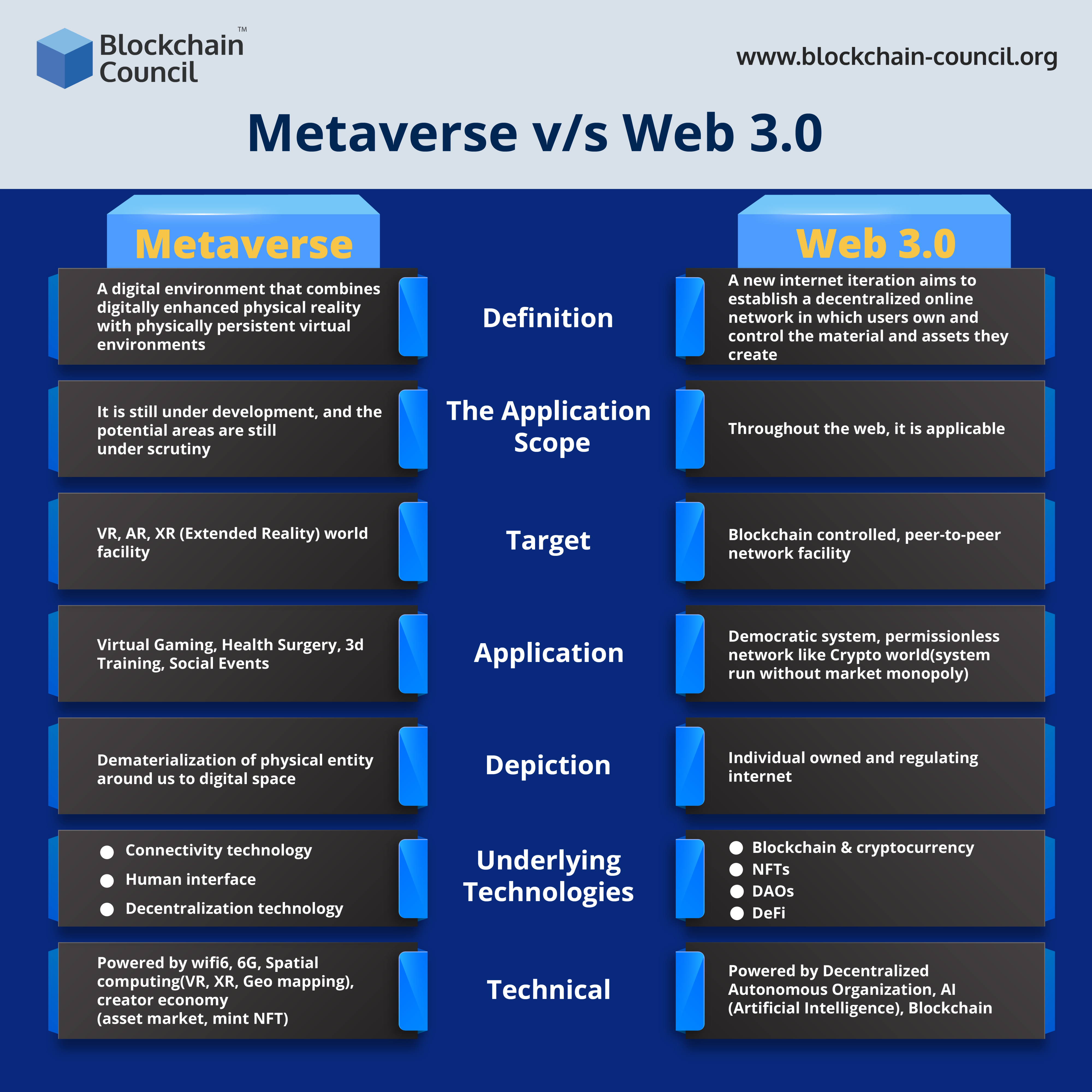
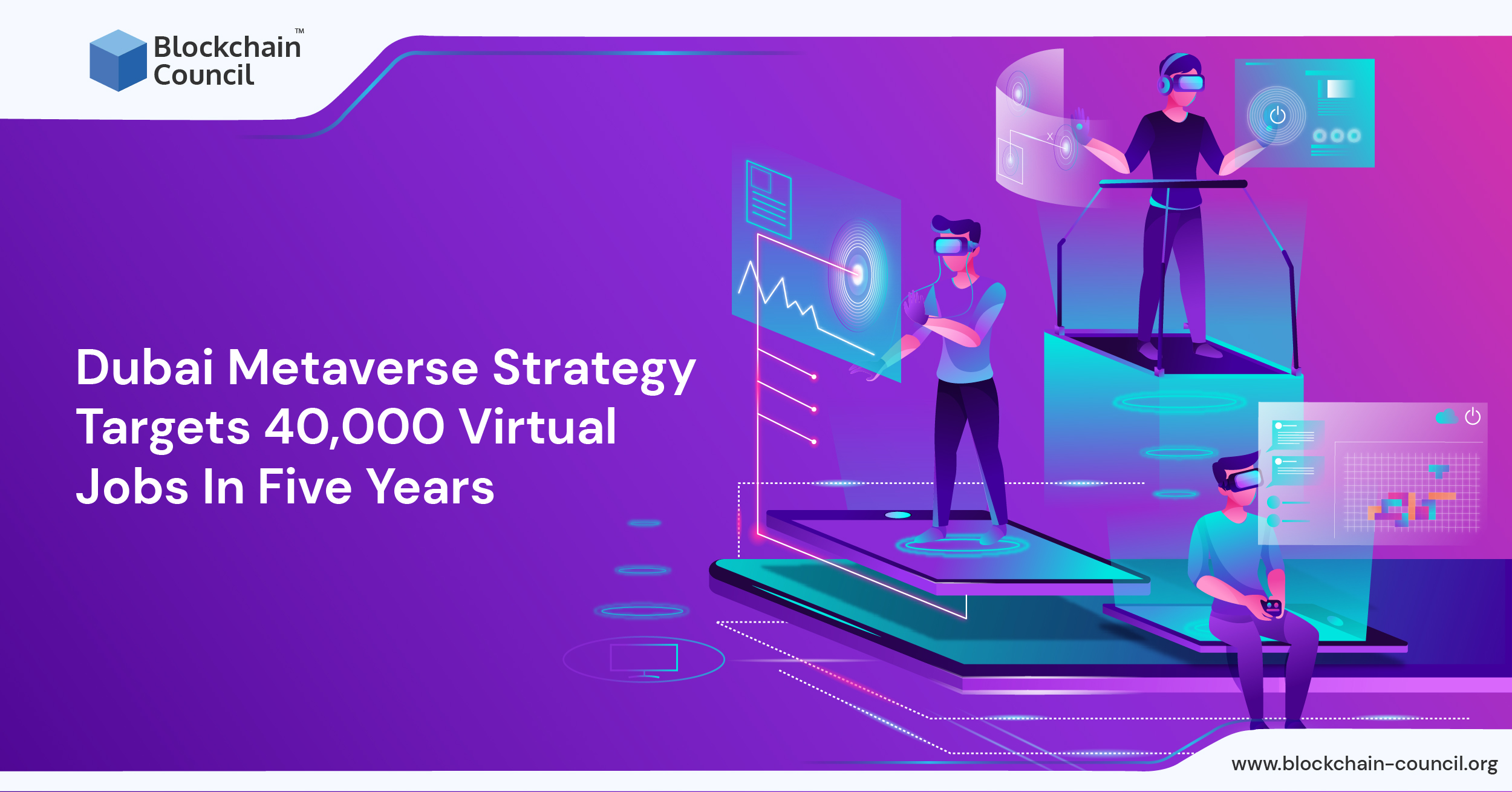
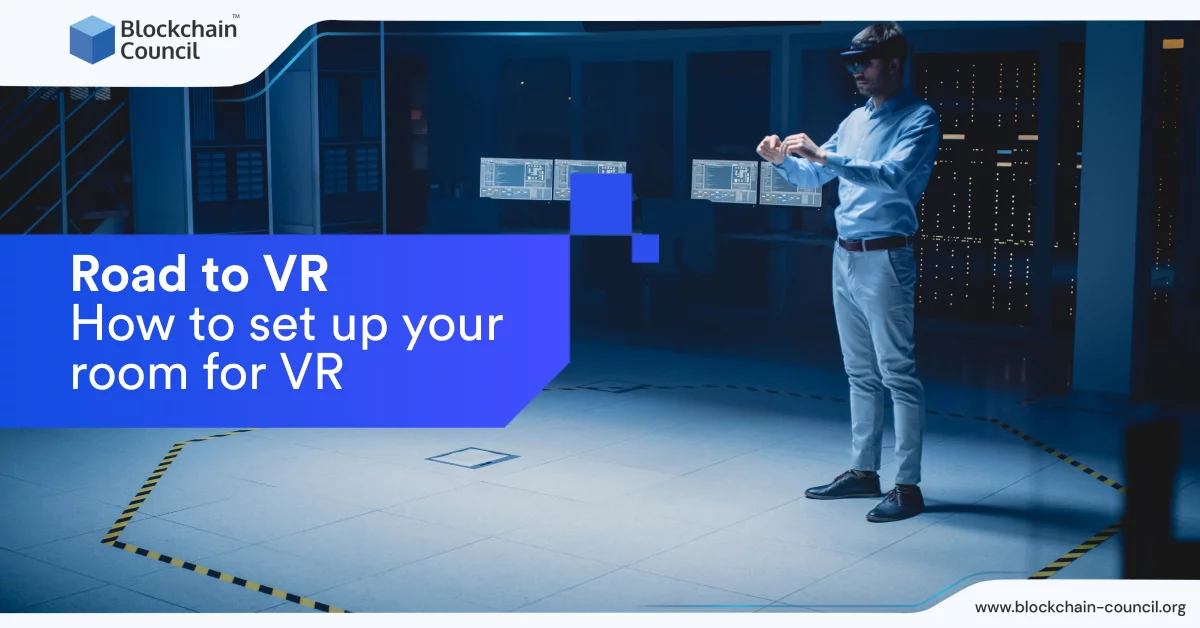
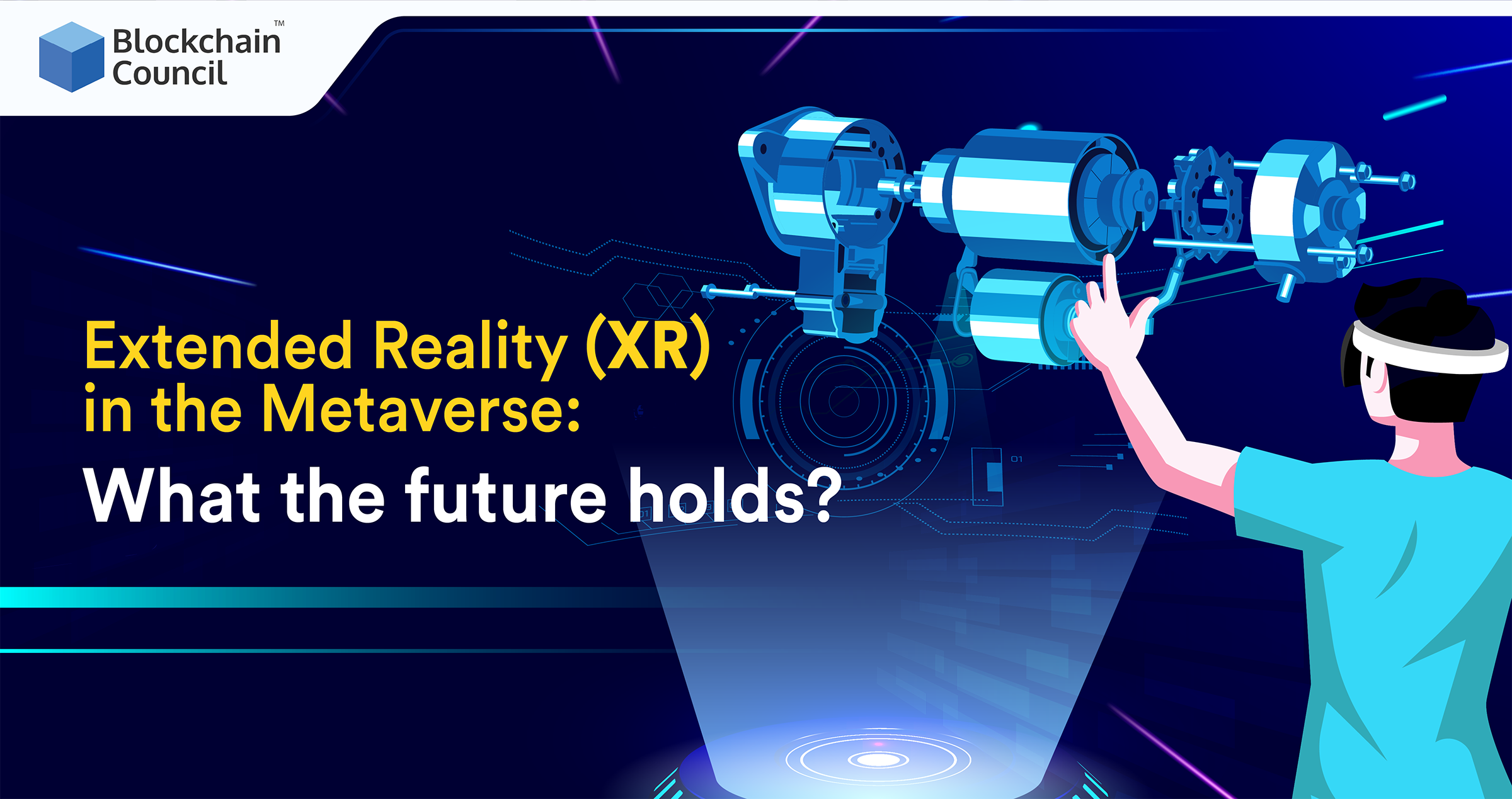
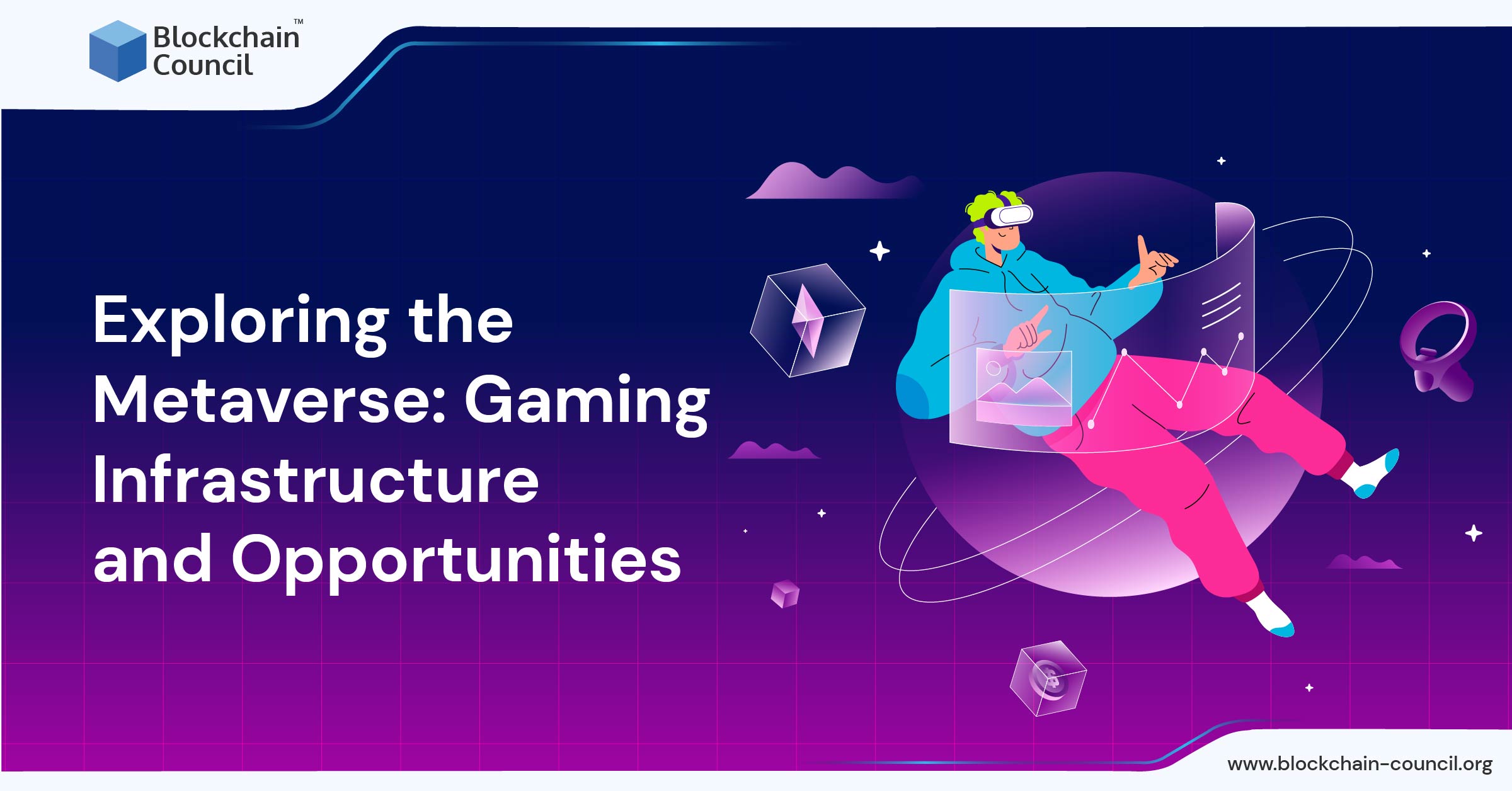
 Guides
Guides News
News Blockchain
Blockchain Cryptocurrency
& Digital Assets
Cryptocurrency
& Digital Assets Web3
Web3 Metaverse & NFTs
Metaverse & NFTs
